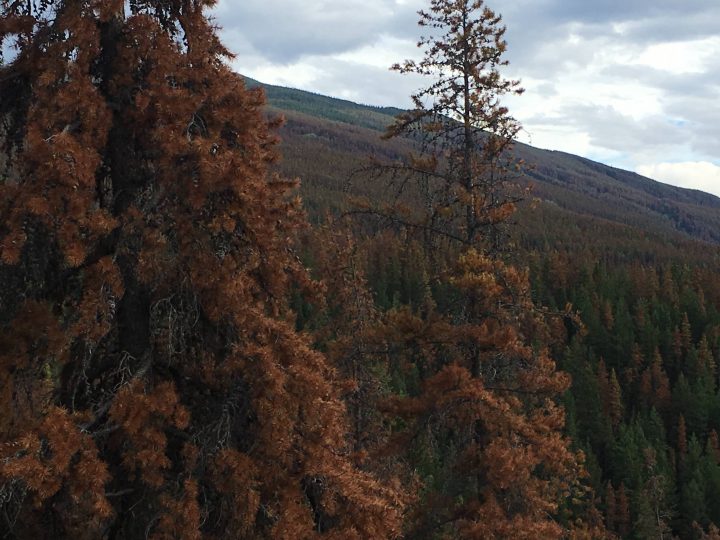Saskatchewan forestry crews are keeping an eye out for a pest that kills pine trees, turning swaths of forests red: the mountain pine beetle.

“The threat level is always elevated. We’re always on alert,” said Rory McIntosh, a forest insect and disease expert for the province.
“The mountain pine beetle is extremely explosive in the way it can outbreak.”
The invasive species is prevalent in B.C. and Alberta, but McIntosh said it’s creeping east.
Mountain pine beetles have been in the Cypress Hills for years, but have yet to be found in northern Saskatchewan, he said.
“We certainly need to pay attention to populations of pest threats that occur outside our provincial boundaries,” he told Global News.
“As we know from the COVID situation, epidemiology knows no jurisdictional boundaries.”
The beetle lays its eggs in pine trees. The larvae hatch there and feed on the tree, contributing to its death.
Cold winters and a limited access to food can restrict the spread. Unfortunately, Canada isn’t short on tasty trees, and McIntosh said winters have been warmer over the past decade.
- Satellite built by N.B. students not responding a week after entering Earth’s orbit
- Stuck in B.C. lagoon for weeks, killer whale calf is finally free
- T. Rex an intelligent tool-user and culture-builder? Not so fast, says new U of A research
- Nearly 200 fossil fuel, chemical lobbyists to join plastic treaty talks in Ottawa
“Things are stacked against us and … the best response to this is early detection and rapid response,” he said.
Population control
The environment ministry is always on the lookout for mountain pine beetles, McIntosh said.
In Cypress Hills, the population is managed by removing infested trees.
A recent survey of the area found this winter wasn’t cold enough to knock back the population in the area, McIntosh said.
“We will continue to search for, mark and aggressively remove those infested trees before they pump more beetles out into the local area,” he said.
Forest insect experts have been monitoring for signs of the beetle in the northern boreal forest for years, but have yet to spot any, he added.
Other creepy crawlies
McIntosh said another potentially problematic pest is the emerald ash borer.
The metallic-green insect is both pretty and destructive, attacking and killing healthy ash trees.
The province also monitors the elm bark beetles, the culprit behind Dutch elm disease, McIntosh said. He noted Dutch elm was first recorded in Saskatchewan around 1980.
Both emerald ash borers and elm bark beetles can be spread by transporting firewood.
“Firewood is one of the main ways that insects are able to travel long distances and colonize new areas where they don’t belong,” McIntosh said, highlighting laws that ban the import of wood from certain areas.
“Buy local and burn local.”



Comments